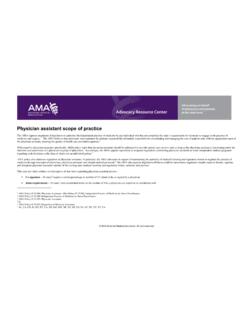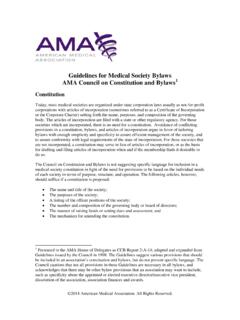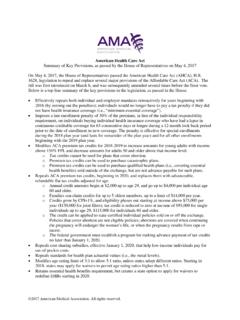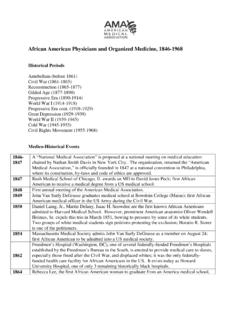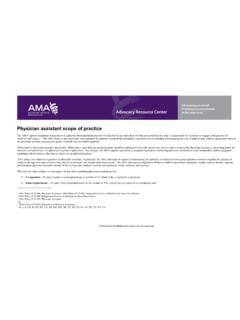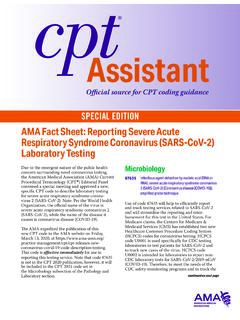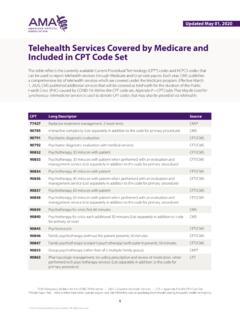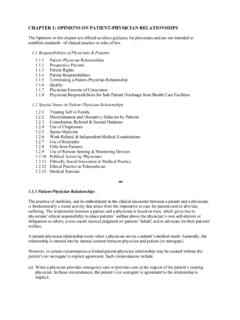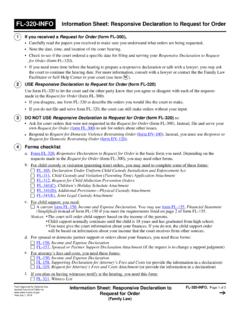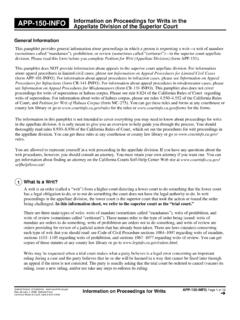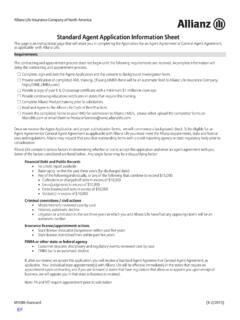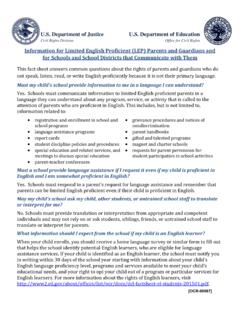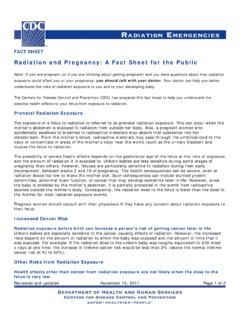Transcription of What is Information Blocking? Part 1
1 1 Information blocking ( info blocking ) can occur in many forms. Physicians can experience info blocking when trying to access patient records from other providers, connecting their electronic health record (EHR) systems to local health Information exchanges (HIEs), migrating from one EHR to another, and linking their EHRs with a clinical data registry. Patients can also experience info blocking when trying to access their medical records or when sending their records to another provider. AMA policy supports legislative and regulatory prohibitions on info blocking and is a longstanding advocate of eliminating major contributors to info blocking by EHR vendors.
2 These include: Restrictive and unfair contractual limitations on physicians use and exchange of medical Information ; Excessive fees charged to create EHR interfaces or connections with other health Information technology (health IT); and Technical or non-standard methods of implementing EHRs and other health IT that block the access, exchange, or use of medical longstanding concerns raised by the AMA, patients, and health care community stakeholders, the 21st Century Cures Act (Cures) is a landmark bipartisan health care innovation law enacted in December 2016.
3 Cures includes provisions to promote health Information interoperability and prohibit info blocking by Actors, which are health Information networks, HIEs, health Information technology developers of certified health IT, and health care March 2019, the Office of the National Coordinator for Health Information Technology (ONC) issued a Proposed Rule, 21st Century Cures Act: Interoperability, Information blocking , and the ONC Health IT Certification Program and released a final rule in March 2020, published in the Federal Register on May 1, 2020.
4 Key terms in the Information blocking rules and regulationsCures defines info blocking as business, technical, and organizational practices that prevent or materially discourage the access, exchange or use of electronic health Information (EHI) when an Actor knows, or (for some Actors like EHR vendors) should know, that these practices are likely to interfere with access, exchange, or use of EHI. If conducted by a health care provider, there must also be knowledge that such practice is unreasonable and likely to interfere with, prevent, or materially discourage access, exchange, or use of 1 What is Information blocking ?
5 This document is for informational purposes only. It is not intended as medical, legal, or consulting advice, or as a substitute for the advice of a physician, attorney, or other professional. It does not address all possible legal and other issues that may arise regarding Information blocking and interoperability. Each health care provider organization will need to consider its circumstances and requirements, which cannot be contemplated or addressed in this document. Part 1: What is Information Blocking? 2 The info blocking Final Rule defines access, exchange, and use as follows: Access is the ability or means necessary to make EHI available for exchange, use, or both.
6 Exchange is the ability for EHI to be transmitted between and among different technologies, systems, platforms, or networks; and is inclusive of all forms of transmission such as bidirectional and network-based transmission. Use is the ability for EHI to be understood and acted upon once accessed or exchanged. Acted upon includes the ability to read and write and is also bidirectional. What is electronic health Information (EHI)? The term EHI was established by Congress in Cures; however, it was not defined in statute.
7 Rather, ONC has defined it in their Final Rule. EHI is defined as the electronic protected health Information (ePHI) in a designated record set (as defined in the Health Insurance Portability and Accountability Act (HIPAA) regulations) regardless of whether the records are used or maintained by or for a covered entity. The designated record set in a physician s practice typically includes: Medical records and billing records about individuals; Other records used, in whole or in part, by physicians to make decisions about the first 24 months after publication of the Final Rule (currently until August 2, 2022), for the purposes of the Information blocking definition, EHI is limited to the data elements represented in the US Core Data for Interoperability (USCDI) V1 standard adopted in the Final Rule.
8 EHR vendors are currently updating their products to support the access, exchange, and use of all data elements in the USCDI. This will take time and, for some smaller EHR vendors, may take several months. After August 2, 2022, the definition of EHI expands to that of ePHI described above. At that time, all physicians will be required to make their patients ePHI available for access, exchange, and must comply and by when? The Cures Act specified four types of entities referred to as Actors who must comply with info blocking requirements: Health care providers1 ; Health IT developers of certified health IT; and Health Information Networks (HINs) or HIEs (HIN and HIE are combined into one defined type in the Final Rule).
9 All Actors will be subject to ONC s Information blocking rules and regulations on April 5, 2021. 1 Same meaning as health care provider at 42 300jj includes hospital, skilled nursing facility, nursing facility, home health entity or other long term care facility, health care clinic, community mental health center, renal dialysis facility, blood center, ambulatory surgical center, emergency medical services provider, Federally qualified health center, group practice, pharmacist, pharmacy, laboratory, physician, practitioner, provider operated by, or under contract with, the IHS or by an Indian tribe.
10 Tribal organization, or urban Indian organization, rural health clinic, a covered entity ambulatory surgical center, therapist, and any other category of health care facility, entity, practitioner, or clinician determined appropriate by the Secretary. Part 1: What is Information Blocking? 3 What practices are considered Information Blocking? info blocking practices can be an Actor s acts or omissions essentially anything that interferes with the access, exchange, or use of EHI. However, just because an action interferes with the access, exchange, or use of EHI does not mean the practice is automatically considered an info blocking violation facts and circumstances unique to each action should be taken into account.
